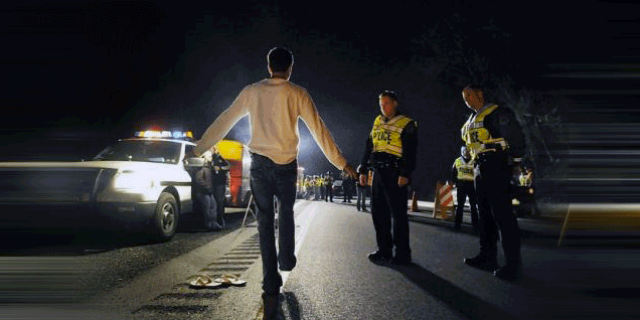Driving Under the influence is one of the most committed crimes in the state of California. Checkpoints are an easy way for law enforcement to, “shoot fish in a barrel.” It is very easy for officers to maintain an arrest from a DUI at a checkpoint because they are legal in the state of California. But, you may now know that DUI checkpoints are illegal in 12 other states. The California Supreme Court upheld a decision of the lower court that found that sobriety checks are constitutional. In the landmark California Supreme Court case: Ingersoll v. Palmer (43 Cal.3d 1321 (1987), the Supreme Court established several requirements that police officers must adhere to, so that the stop is valid and does not violate your constitutional rights.
At a DUI checkpoints officers evaluate your sobriety within a brief period. They are looking for objective symptoms of intoxication: bloodshot/watery eyes, slurred speech, or even alcohol odor. If even one symptom is readily available “bloodshot/watery eyes” the police officer is entitled to pull you over for subsequent DUI investigation. If there are no symptoms present, they must release you from the minor detainment.
There are certain requirements for a DUI checkpoint to be legal and enforceable in a court of law: Needs to be published in advance of the checkpoint, time and circumstances of detention, location, and a supervising officer needs to be present at the scene. We should examine each in detail:
1) Need to publish in advance of the checkpoint: this requirement is a integral to lower the interference of the DUI checkpoint and boost its prevention in reducing DUI cases.
2) Time and circumstances of detention: this requirement is in place in order to limit the time that the DUI is invasive in your life. Law enforcement is only allowed to detain you for the time necessary to look for objective symptoms of intoxication, then need to let you be on your way.
3) Location: this requirement is due to a number of factors including: safety of the public, proper and adequate lighting, appropriate number of cars in proportion to the stop, officers have to be in uniform, and high DUI needs to be proven in that specific vicinity.
4) Supervising Officer needs to be present: this requirement is in place to protect citizens from improper selection of cars. Supervising officer has full control over the DUI Checkpoint including but not limited to time, location and which cars to stop for example the supervisor can select every 5th car or every 10th car. They cannot select you based upon what you look like or what type of car you are driving at the time.
All of this being said you might still have the question,” How do I get out of a DUI checkpoint” and that brings me to my last requirement #5.
5) A motorist has to have ample opportunity to leave the DUI checkpoint if they do not wish to stop: Most people do not know this but you do not have to stop at a DUI checkpoint. Further, you may not be stopped and briefly detained just because you simply tried to steer clear of the checkpoint. It is also required that officers post visible lighted signs that a checkpoint is coming up soon. Finally, there needs to be a legal place to turn out or around to go a different way.
But, if you commit some sort of vehicle code violation, for example: an illegal u-turn, then there is probable cause that a traffic offense occurred in the presence of an officer and they can get you to the side of the road legally.
BOTTOM LINE: Avoid DUI checkpoints at all costs because you can do it legally without committing a vehicle code violation in the presence of an officer. that is how you can get out of a DUI checkpoint.

